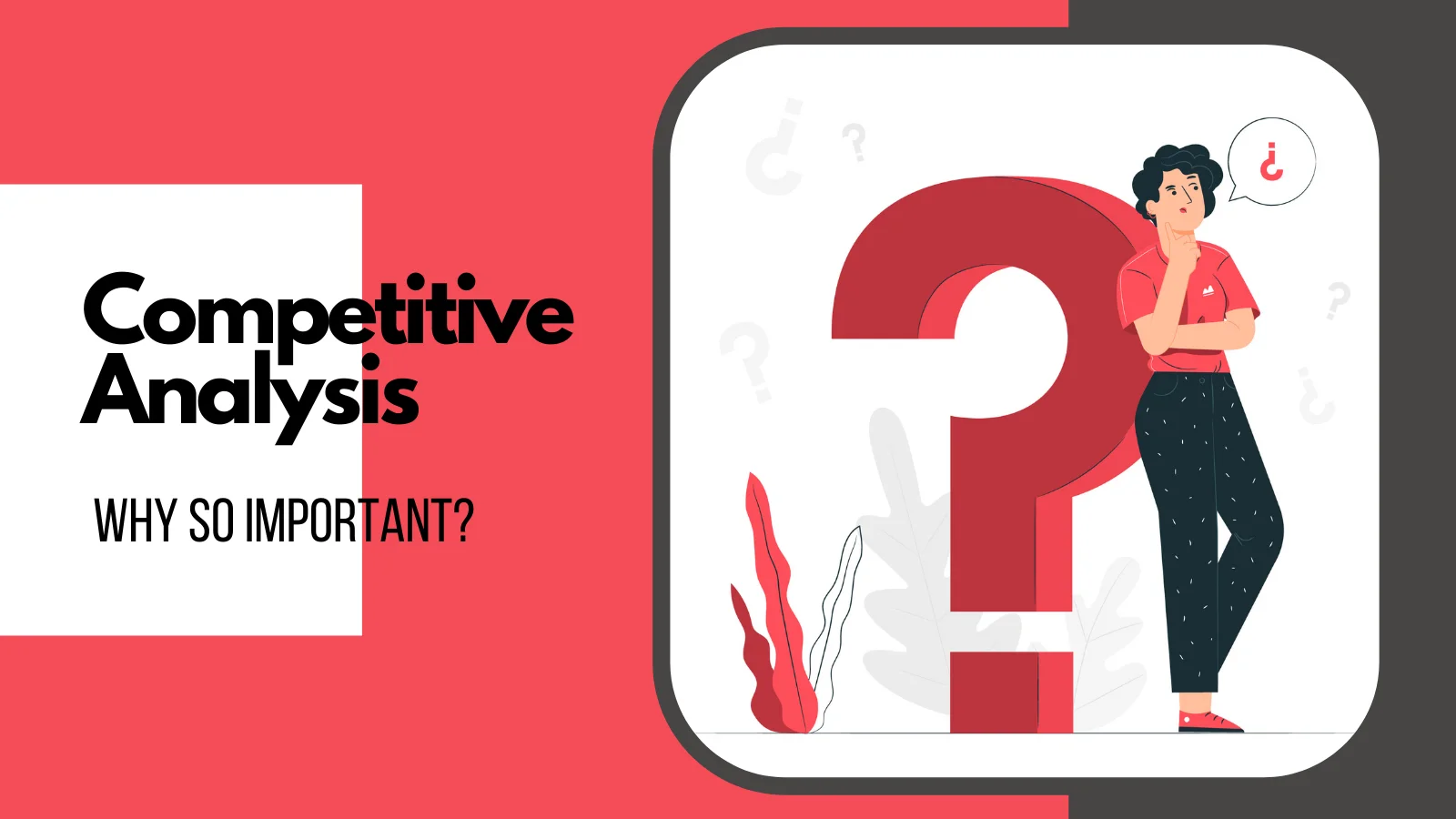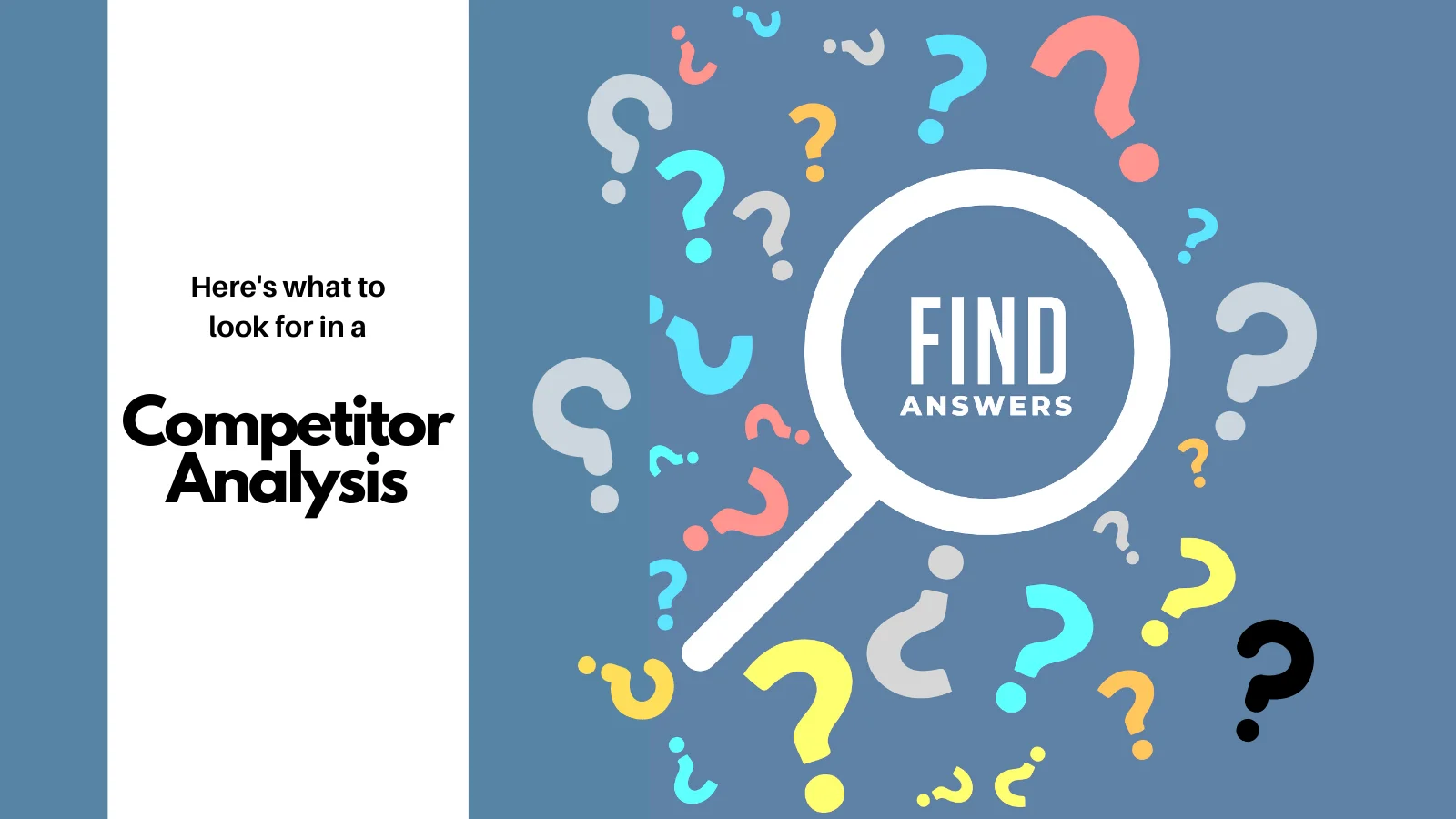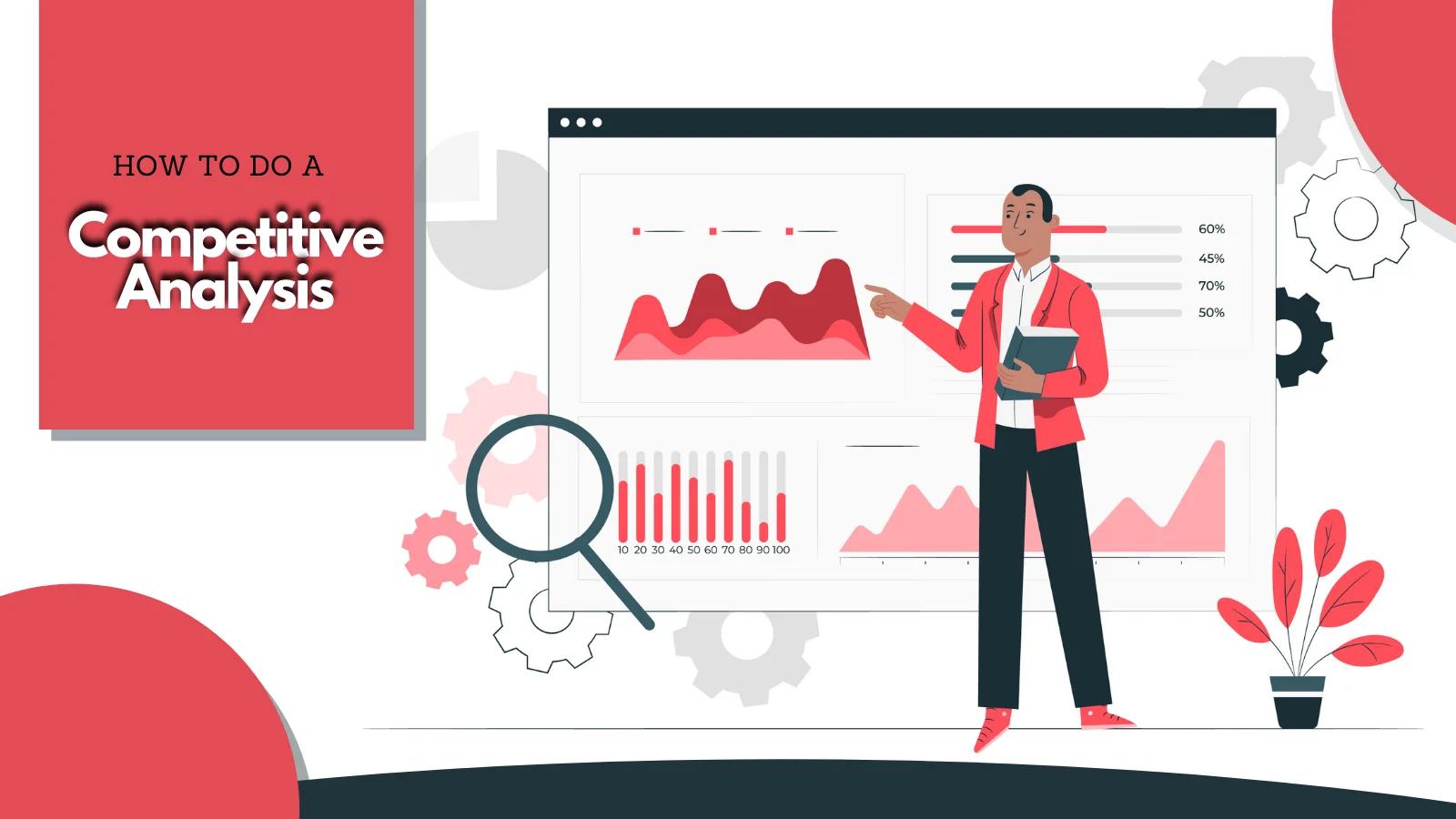What Is A Competitor Analysis And Why Is It Important | 7 Best Practices
When was the last time you checked on your competitors? Are they up to anything new? What strategies are they using for marketing campaigns? If you are not up to date with your competitor’s activities, then you might fall behind. Conducting a competitor analysis is essential for getting an edge over your competitors.
With the new software and technological advancements, marketers and business owners can more easily know about competition than ever before. To stay ahead of your competitors, conducting a competitive analysis is crucial. When it comes to analyzing competitors, the point of being proactive rather than reactive is vital to your business’s success.
Hit The Play Button To Listen Podcast:
If you are not already, you should be doing the same. In this article, we will discuss what competitor analysis is? What is the importance of conducting competitor analysis? What to look for in a competitor analysis? And the best strategies for conducting a competitor analysis. Let’s dive in!
What Is Competitor Analysis?
Every market has multiple companies pitching similar products or services to the same target audience. Competitor analysis is a practice to search and identify your major competitors with similar products and services in your niche industry.
In competitor analysis, you have to research and analyze the marketing strategies of your biggest competitors. This helps you see their strengths, weaknesses, strategic flaws, and by analyzing these data, you can create a solid business strategy. It helps you to try out the unique marketing strategies they haven’t taken advantage of.
Competitive analysis also provides the benefit to see it through the customer’s perspective and improve where required. It empowers you to stay on top of industry trends and ensure exceeding industry standards. Competitor analysis can help you learn the ins and outs of how your competition works and identify potential opportunities to out-perform them.
Why Is Competitor Analysis Important?
The ability to learn faster than your competitors may be the only sustainable competitive advantage.” — Arie de Geus, Shell Oil
To get ahead of your competition and achieve the top place in your industry, You need to learn and adapt faster than your competitors. Competitor analysis gives you the advantage to improve your products, services, and marketing strategies to grow your business.
Analyzing and understanding your competition helps you to build a unique presence and distinguish your brand from others. It allows you to focus on underserved markets, recognize the best practices to operate and separate the worst practices.
If you conduct a competitor analysis, you can use it as a benchmark and compare your company’s strengths, weaknesses to improve your marketing strategy. The regular analysis allows you to keep track of market trends and new players to be aware of, so make sure to make a competitor analysis report.
It will also help you know the top rivals you are competing with throughout every stage of business. It is crucial to keep your analyses up to date. Here are some of the benefits you get from conducting competitor analysis.
Benefits:
- It helps you identify your product’s unique value point and what makes your product distinct from competitors.
- Social media competitor analysis enables you to identify what competitors are doing right and where falling short. It helps you create marketing campaigns that can out-perform industry standards.
- It helps to identify the opportunities in the marketplace and test out new, unique marketing strategies that your competitors are not utilizing.
- It allows you to understand the customer’s perspective on a competitor’s product, services. If they lack some essential features, you can’t add features to your product to meet those needs.
- It helps you to create a benchmark and to measure your business growth.
- Competitor analysis shows you the potential and challenges that your competitors and the market are facing. It will help you anticipate potential market changes, threats, and campaigns that you can avoid.
What To Look For In A Competitor Analysis?
There are several vital components to consider incorporating in competitor analysis. You should include as much information as possible to form an accurate competitor analysis report. It will show you how your business is performing compared to others.
You will need to gather information on potential competitors and their features, pricing, service quality, strengths, and weaknesses. You can also use competitor analysis tools like PowerAdSpy to see what type of ads they are using in their marketing campaigns.
Followings are the top 10 components every competitor analysis templates should include:
#1. Feature Matrix:
Find all the features that your competitor’s products and services include. And save it in a competitor insight spreadsheet to conceive how companies stack up against one another.
#2. Market Share Percentage:
It will help identify the main competitors in your niche industry. Try to avoid excluding larger competitors completely, as you can learn more from their failures and success.
#3. Pricing:
You must know how much your competitors charge for their products and services and where they fall on the quantity vs. quality spectrum.
#4. Marketing:
What type of marketing strategy are your competitors using? Look at their websites, social media accounts, SEO strategies, types of ads, and current marketing campaigns. You can use PowerAdSpy to see all the popular ads working in your niche market.
#5. Differentiators:
What are the unique selling points of your competitors, and how do they advertise their best qualities?
#6. Strengths:
Identify the strengths of your competitors, what they are good at. You can see the reviews if they have a better product? Do practices they use for brand awareness?
#7. Weaknesses:
What are your competitor’s weaknesses? Do they have a weak social media strategy? Do they have an online store? Or their website is not well optimized? All this information can give you an edge.
#8. Geography:
Find out where your competitors provide service and where they are located. If they have brick-mortar businesses, or most of the business is done online?
#9. Work Culture:
Try to know the objectives of your competitors. What kind of work culture do they have in the office? Are their employees satisfied? Are they a startup? All this information will help you to make your workplace healthy and increase employee satisfaction.
#10. Customer Reviews:
Analyze their customer reviews, writing both pros and cons. In a 5-star system, look at 5-star, 3-star, and 1-star reviews. Tip: 3-star reviews are mostly honest.
How To Do Competitor Analysis?
When you perform competitor analysis, you should have a clear objective. Competitor analysis can help you improve your business strategies and better serve your audience. If you are not doing it properly, your competitors will stay ahead of you, as it will generate fallacious results. Here are the steps you should follow for a constructive competitor analysis:
#1. First Step Of Competitor Analysis : Determine Your Top Competitors
First, you have to figure out who competitors are. It will allow you to compare the data accurately. What works in a business similar to yours may not work for your brand. So how can you do this?
Make two categories of your competitors:
- Direct :
In this category, keep the businesses that have similar products and operate in the same geographical area.
- Indirect:
In this category, keep the business whose products are not similar but fulfill the customer’s needs or solve their problems. Once you’ve defined the types of competitors to focus on, the next step is pinpointing exactly who they are, and that’s where multiple research sources come into play.
Competitor Identification Sources
To make finding competitors more actionable, use multiple research angles:
-
Keyword Research – Identify brands bidding on or ranking for the same keywords you target. This helps uncover both direct and indirect competition.
-
SERP URL Analysis – Review websites that consistently appear alongside yours in search results. These can reveal market players you might not have considered.
-
Social Media Searches – Track brands actively advertising or gaining organic traction in your niche on platforms like Facebook, Instagram, LinkedIn, and X.
-
Industry Forums & Communities – Scan relevant groups, discussions, and Q&A platforms to see which brands are being mentioned by your audience.
-
Ad Monitoring – Observe trends, messaging styles, and formats that top competitors use across different platforms.
Combining these channels ensures you capture a complete picture of your market, making the competitor analysis process more accurate and valuable for future strategy.
#2. Discover What Products Or Services They Offer:
Products and services are the essence of any business, which is why it is a good place to start. You have to analyze their complete product line and the quality of the products or services they provide.
Here are some questions you should consider including:
-
- Are they low-cost or high-cost providers?
- Are they working mainly on volume sales or one-o purchases?
- How much market share do they acquire?
- What are the qualities and requirements of their target audience?
- Are they using different pricing strategies for online or offline purchases?
- What are their USPs?
- What channels do they use for delivering products/services?
#3. Research Your Competitor’s Sales Tactics And Results:
It can be a bit tricky, here are some questions you need to find answers to:
- What is their sales process?
- What channels do they use?
- Do they operate in multiple locations? What advantages does it give them against you?
- Are they trying to expand or scaling down?
- Are they in any collaborative reselling programs?
- How much revenue do they generate per year? What is the total sales volume?
- Do they provide any discounts on products or services?
- How many people are involved in the selling process?
All this information will give you an idea of how competitive the sales process is, and what information is required to prepare your strategy to compete during the final buy stage.
For publicly owned companies, you can easily find annual reports online, but you’ll have to put extra effort to find info from privately owned businesses.
#4. Ensure You’re Meeting Competitive Shipping Costs:
Customers tend to buy products that have lower shipping costs and similar product quality. Nowadays, free shipping is a major perk that attains consumers’ attention. If shipping is a major factor in your business like e-commerce marketing. Then you should take a look at competitors’ shipping costs. If free shipping is widely used in your industry, try to look for a way to apply that.
#5. Analyze Their Content Strategy:
What kinds of ads do they use for marketing campaigns? Do they post hundred blog posts or a small handful? Are they using images, videos, or a combination of both? How frequently do they post? If their content is relevant for the audience or not?
You can also perform competitor keyword analysis to see what keywords they are ranking for. Competitor keyword analysis will help you see the keywords they are ranking for and you can target the same keyword to rank on search engines.
Depending on all this info create your content marketing strategy. You can also use PowerAdSpy to see what type of ads your competitors are using. There is no doubt that Images are great, but videos are better, or at least they are the latest ads strategy that currently works best on Social.
PowerAdSpy- Ad Analysis Tool
PowerAdSpy has the fastest-growing category of Social Video Ads to give a better idea of what kinds of video ads your audience responds to and allows you to download them for your own ad campaigns. It provides the ads that are working in your niche and increases conversion.
PowerAdSpy is a comprehensive competitor ads analysis tool that provides valuable advertising insights for ad strategies and campaigns of your competitors. By utilising this tool, you can gather information on various marketing aspects.
#6. Analyze The Customers Engagement On Their Content:
If you want to see how engaging their content is, you need to analyze the reaction of customers to their posts. You need to check all the metrics’ average number of likes, comments, shares, and more. With the help of PoweradSpy, you can clear the visibility of ads analytics. It gives you full visibility of your competitor’s ads. You can visit their profiles and cross-check the real-time engagements and opinions directly from the dashboard.
#7. Perform A SWOT Analysis:
As mentioned earlier, you need to know your competitor’s strengths, weaknesses, opportunities, and threats that might harm your business.
By performing a SWOT analysis, you get all this information.
- What do your competitors excel at products, content marketing, social media platforms?
- Where do they have an edge over your brand?
- What is the weakest area for your competitor?
- Where do you have an advantage over your competitor?
- What could they do better with?
- In which part are they a threat to your business?
- Are there opportunities in the market that your competitor has recognized?
Then you will be able to compare their weaknesses against your strengths and vice versa. By doing this, you can make a better marketing strategy. And you can see the areas for improvement within your brand.
Now that your SWOT analysis has revealed where you stand against competitors, it’s time to turn those insights into action with a step-by-step plan that shows exactly how to use competitor analysis for smarter decision-making.
Post-Analysis Action Plan
Once you’ve gathered the data, the real value comes from turning insights into action. A well-organized plan ensures your competitor findings aren’t just interesting facts, but actual levers for business growth.
Step 1 – Prioritize Key Insights
Review your SWOT analysis and highlight the most critical opportunities and threats. This step helps you avoid getting lost in endless details and focus on what truly impacts your goals.
Step 2 – Align with Business Objectives
Map each insight to your short-term and long-term objectives. For example, if you notice a rival’s rapid growth in a specific market segment, decide whether you’ll compete directly or focus on underserved niches. This alignment keeps your strategy grounded.
Step 3 – Assign Ownership
Insights only drive results when someone is accountable. Assign each action point to a team member with clear deadlines. This creates accountability and ensures nothing slips through the cracks.
Step 4 – Integrate with Marketing and Sales
Share your findings with marketing, sales, and product teams. This cross-functional collaboration transforms insights from the competitor analysis into better messaging, product improvements, and more targeted campaigns.
Step 5 – Monitor and Adjust
Markets evolve quickly. Set a review cycle—monthly or quarterly—to revisit your analysis, track progress, and adjust tactics. This ensures your strategy stays relevant and competitive.
How to Use Competitor Analysis in Practice
-
Product Development: Identify gaps in the market and create solutions your competitors aren’t offering.
-
Marketing Strategy: Use insights to refine ad targeting, content themes, and messaging.
-
Pricing Decisions: Spot trends in competitor pricing to stay competitive without eroding margins.
-
Customer Retention: Understand what keeps customers loyal to rivals and build similar or better retention programs.
-
Sales Enablement: Equip sales teams with data-backed talking points to counter competitor advantages.
When implemented consistently, this approach ensures your competitor analysis moves beyond theory into tangible business results.
Check Our Latest Posts:
Experts Choice for Facebook Ads – Turbo Ad Finder 2021
Competitive Insights: How It Operates and Influence Your Audience
Wrapping Words:
Competitor analysis not only helps you learn about others but also distinguishes areas where your brand can shine. But first, you have to create a baseline to precisely compare your competition. It will also help while performing a SWOT analysis. Take an objective look at your business, sales, and marketing efforts through the same metrics you use to evaluate your competition.
After conducting a competitive analysis, use the data and best practices to improve your overall marketing strategy. Put your newfound expertise into action to build a unique presence and better serve your customers. Use PowerAdSpy to get the most popular ads that actually works and boost you social media marketing campaigns. If you have any query or suggestions, please let me know in the comments section below!











